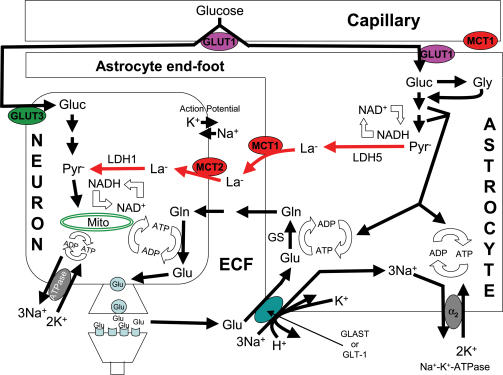Figure 3. Illustration of the putative astrocyte–neuron lactate shuttle.
The basic outline of the astrocyte–neuron lactate shuttle hypothesis is as follows. Blood glucose is a major energy substrate that can be taken up by both neurons and astrocytes via their specific glucose transporters (GLUT3 in neurons and GLUT1 in astrocytes); note that GLUT1 is also present in the plasma membrane of endothelial cells making up capillaries. Blood glucose may be more readily available to astrocytes because the surface of intraparenchymal capillaries is covered by specialized astrocytic end-feet. Release of the neurotransmitter, glutamate, at glutamatergic synapses leads to glutamate uptake into surrounding astrocytes via glutamate transporters GLT-1 and GLAST to terminate the action of glutamate on postsynaptic receptors. Glutamate entry into astrocytes is powered by the Na+ concentration gradient and current evidence suggests that one glutamate enters with three Na+ and one H+ while one K+ is simultaneously extruded. The resulting increase in intra-astrocytic [Na+] activates a glia-specific Na+–K+-ATPase α2 subunit. Glutamate is converted to glutamine by glutamine synthetase. Both the ATPase pump activation and the glutamine synthesis activate astrocytic glycolysis that is possibly compartmentalized with these processes; presence of LDH5, the muscle form of LDH, is argued to promote La− formation. The end result is La− accumulation and efflux into the extracellular fluid, facilitated by MCT1. Subsequently, La− is taken up into neurons via MCT2. Glutamine also diffuses from astrocytes into the extracellular fluid and on into neurons where it is used to resynthesize glutamate. La− taken up into neurons is preferentially converted to pyruvate, arguably because of pyruvate utilization as an aerobic fuel and the presence of LDH1, the heart form of LDH. In this hypothesis, the energy metabolism of neurons is largely aerobic with La− serving as the major fuel. See text and Table 2 for further details of the hypothesis, and Table 3 for concerns/questions about the hypothesis. GLUT1 and GLUT3: specific glucose transporters located in the membranes of brain endothelial cells and astrocytes (GLUT1), and neurons (GLUT3); MCT1 and MCT2: specific monocarboxylate transporters located in the membranes of brain endothelial cells and astrocytes (MCT1), and neurons (MCT2); Gluc: glucose; Gly: glycogen; Pyr−: pyruvate; La−: lactate; Glu: glutamate; Gln: glutamine; GS: glutamine synthetase; LDH1 and LDH5: specific forms of lactate dehydrogenase in neurons (LDH1) and astrocytes (LDH5); ECF: extracellular fluid; GLT-1 and GLAST: glutamate transporters; α2: glia-specific Na+–K+-ATPase subunit. Redrawn with permission from Pellerin (2003), Lactate as a pivotal element in neuron-glia metabolic cooperation, Neurochemistry International 43, 331–338. Used by permission of Elsevier.

